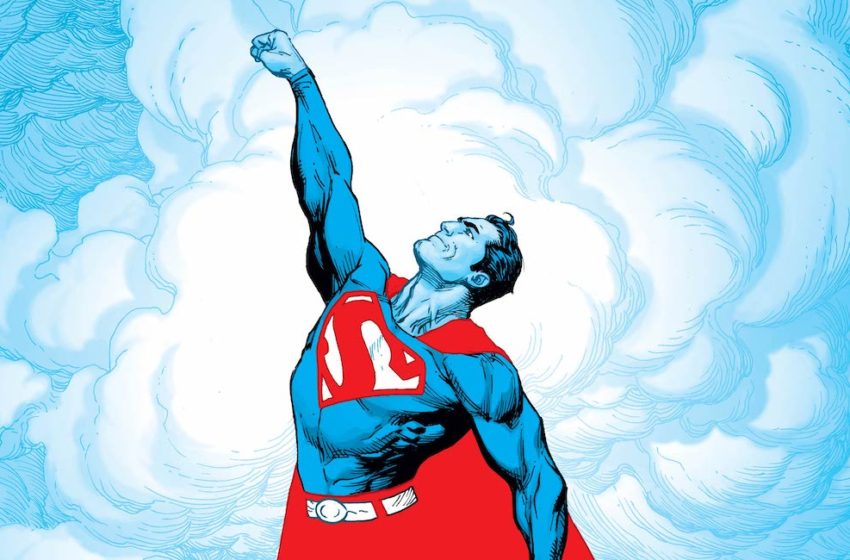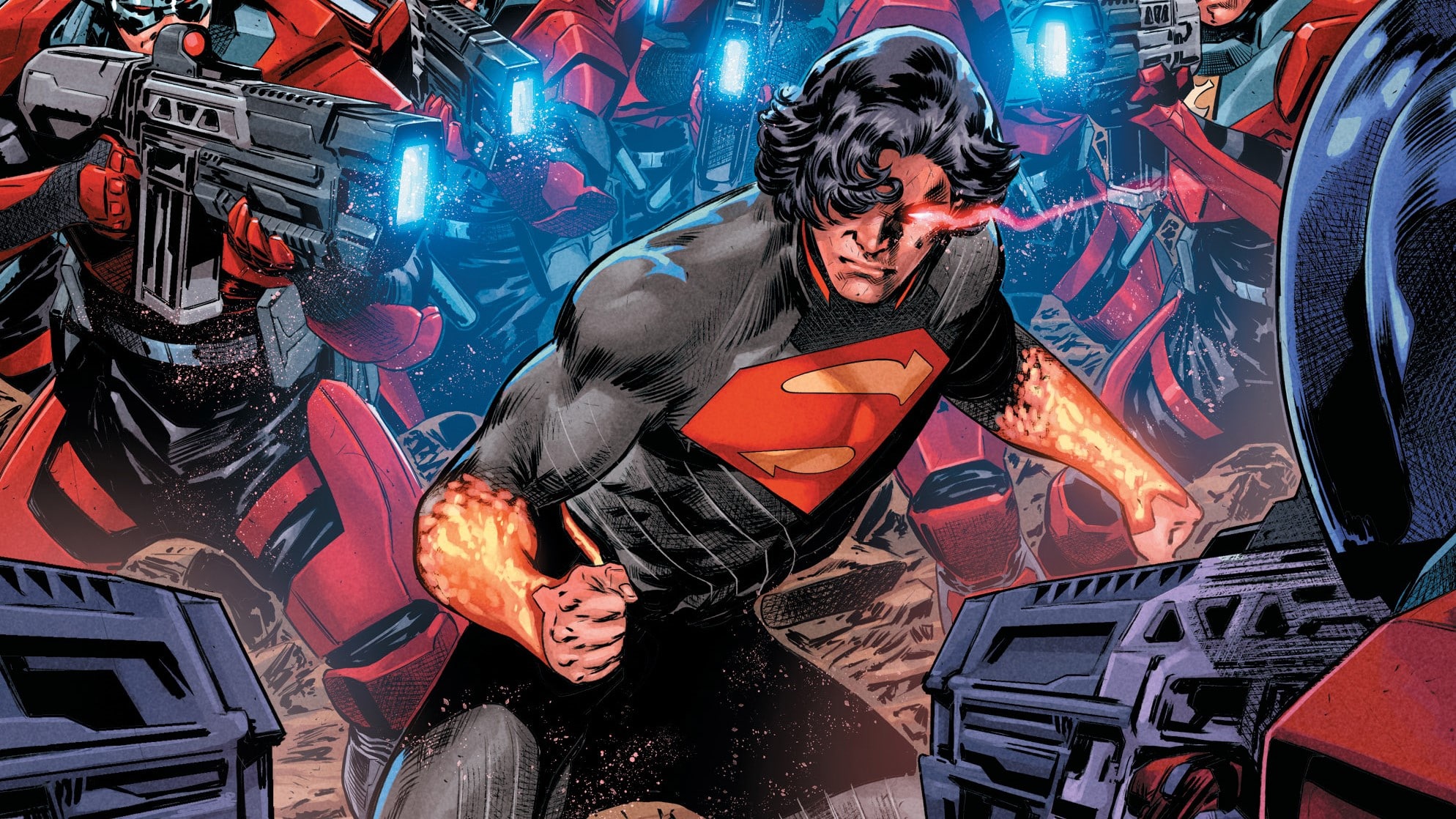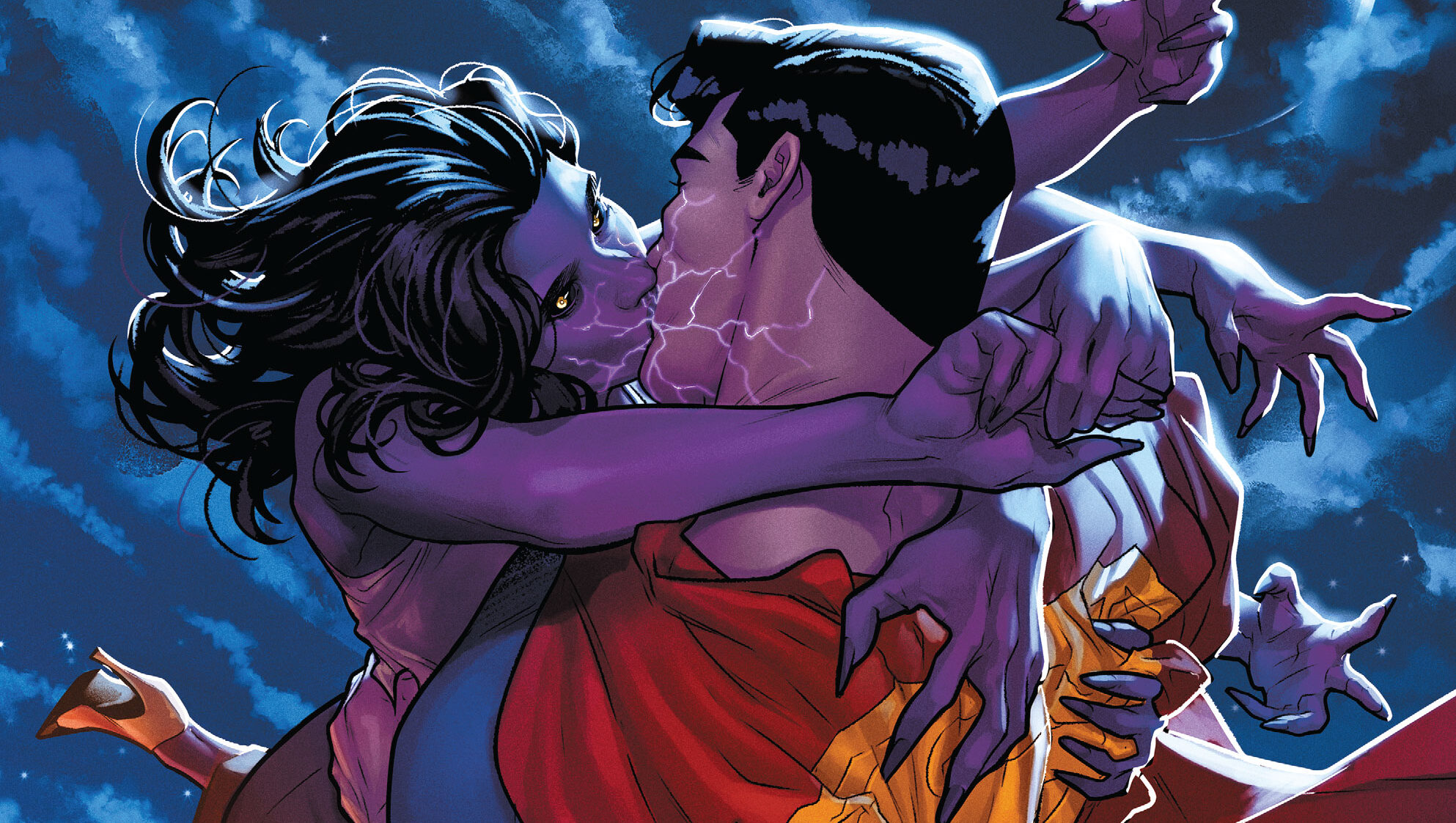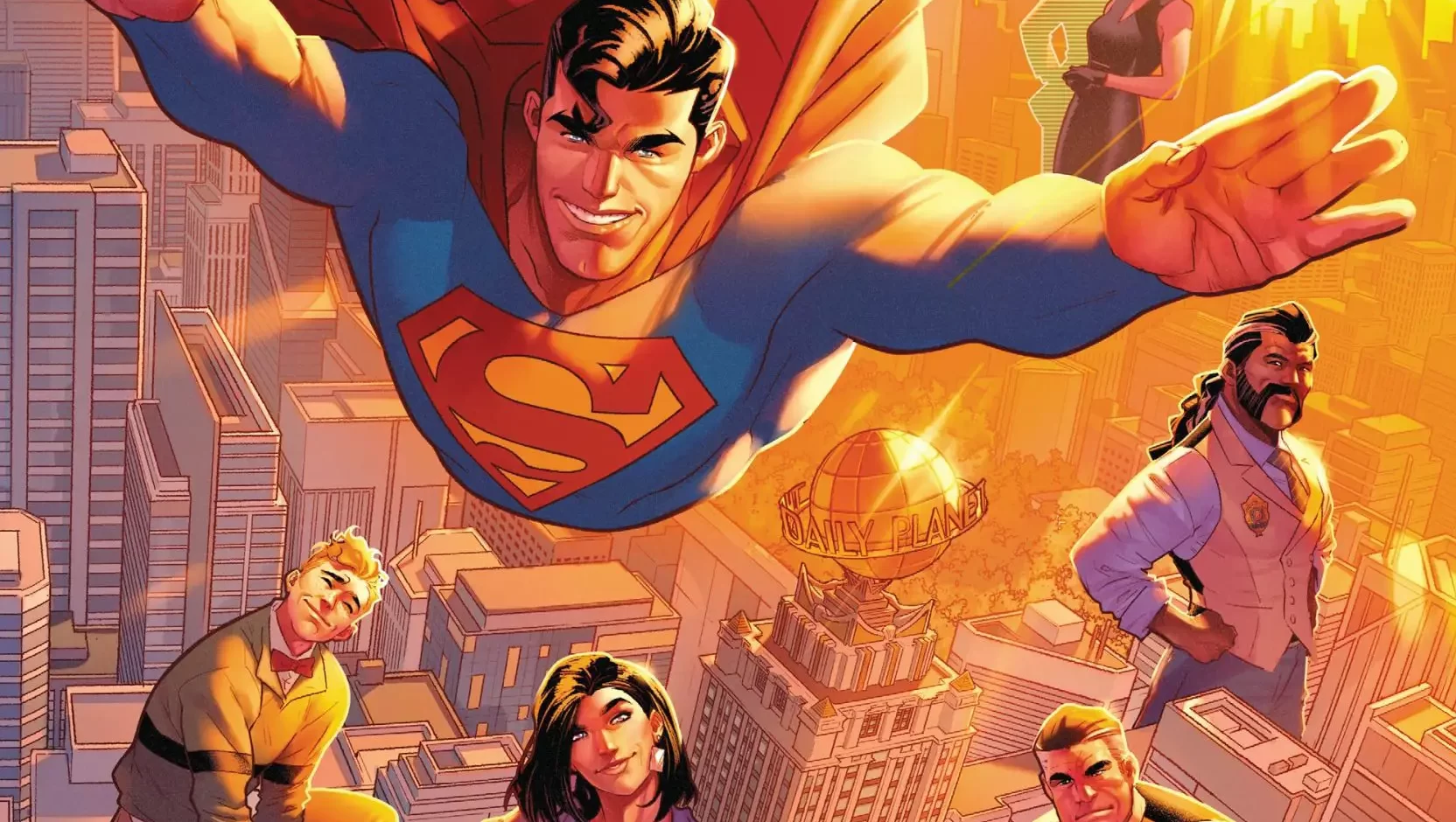The Man of Steel gets his own take on the “color” anthology in Superman: Red And Blue #1 including:
“Untitled” written by John Ridley, art by Clayton Henry, colors by Jordie Bellaire and letters by Dave Sharpe
“The Measure of a Man” written by Brandon Easton, art by Steve Lieber, colors by Ron Chan and letters by Clayton Cowles
“The Boy Who Saved Superman” written and art by Wes Craig and lettered by Deron Bennett
“Human Colors” written by Dan Watters, art by Dani and letters by Dave Sharpe
“The School of Hard Knock-Knock Jokes” written by Marguerite Bennett, art by Jill Thompson and letters by Troy Petri
Tony Thornley: Welcome back to the Fortress of Solitude fellow super-fans! And we’re in for a treat this week. While Justin and I are going to be covering the main Superman titles for the column, we’re going to be welcoming special guest contributors for Red and Blue and Superman ‘78! And first up is none other than Super-expert and Supergirl herself Cori McCreery!
Cori McCreery: Anyone who knows me knows how much I love the Super-family, and how excited I was when this book was launched. I’ve wanted a Superman version of the Batman: Black & White approach for years, as it opens up opportunities for different types of storytellers to get a shot with a big character.
TT: I’m very excited to talk about this issue with you. It’s an interesting mixed bag. None of the stories are stinkers, but I think we’re looking at a situation of “good, better, best.”
GOOD
TT: This opening tale was a weird one, wasn’t it? While I enjoyed it, it was EXTREMELY dependent on an obscure World’s Finest two-parter from 1970. In it, Clark returns to a (fictional) former Soviet bloc country that held him hostage for eight months to try to reconcile what happened to him there.
What did you think of it Cori?
CM: I’m about where you are on this one I think. It’s not a bad story, but it’s weird, and without the context of the World’s Finest issues, it doesn’t quite land. And honestly even with the two-parter it’s still weird. Mostly because this is a very serious look back at those events, which themselves were very much a Silver Age story, full of wackiness and hijinks despite the subject matter. I do think John Ridley tells this with nuance, but there are just some weird decisions to tie it so closely to an unavailable story. That two-parter isn’t on Comixology, it’s not on DC Universe Infinite. It’s almost impossible to find.
TT: Yeah, I went longbox digging for it on Tuesday and the earliest issues they had of the series was in the early 200’s. But huge chunks of World’s Finest were by Bob Haney, who isn’t as bad a writer as he has a reputation for (at least in my opinion), and this arc was no exception. Haney was not a writer known for his nuance though. Making this story a direct sequel to that hangs over it.
However, the themes actually explored by the story, I liked a lot. It felt very real-world while belonging firmly in the DCU. Superman facing real world evil and finding it wearing a business suit and a smile is all too relatable, even if we’ve never been kidnapped using synthetic Kryptonite.
CM: Yeah, I honestly feel like maybe I would have liked it more had it not specifically called out the two issues of World’s Finest, because the story itself told that same story in flashback form. Had I not known to look for those issues, I would have still come away with a good story.
TT: Yeah, I completely agree. And Henry and Bellaire just do a fantastic job with the art. It’s a great looking story.

BETTER
CM: Speaking of pretty heavy themes, the Steve Lieber story with writer Brandon Easton was a lot more intense than I expected. When I see a Lieber story, I feel like I go in expecting light-hearted goofs, and this certainly was not that. What did you feel about this story, Tony?
TT: I liked this story- in which Superman attends the funeral of a woman who died of an overdose- but I had two issues with it. I think this is the only story of the bunch where the coloring fell short. In the Ridley and Henry story, Bellaire used it to evoke certain feelings. In the following stories, it’s used to some amazing effect we’ll talk about in a minute. But here… it’s just kind of there. Ron Chan colors it competently, but it doesn’t really do anything.
The other issue I have is that the story focuses a little too much on “Superman could solve all the world’s problems if he really wants to” specifically in regards to drugs.
I do like that Easton called back to the Metropolis Mailbag, and leans into Superman as a symbol of hope. Plus, Lieber is just always so good. I think he’s just one of the best cartoonists in comics right now.
CM: I also had some problems with the coloring, especially in the sense that by making the focus characters Black, but only having access to red and blue in your palette you are doing them a disservice. There are times at the beginning of the story where I didn’t realize the main character was supposed to be Black, until we got to the flashbacks.
TT: I’m glad that wasn’t just me. It took me a minute to realize it was the same character.
CM: But I do love the callback to Metropolis Mailbag, because those are two of my favorite issues of the early Triangle Era. They were a way to really provide some heartfelt depth to the people whose lives Superman enriches.
TT: Yeah, it’s such a good way to show Clark’s humanity.
Then we get the really enjoyable Wes Craig and Deron Bennett story. I love Superman stories where ordinary people prove to be heroes. This story, about a young man who saved Superman, and Clark meeting him again years later, is a great example of that. Abdi is written extremely realistically, as a young man who wants to make a difference in the world. And in this moment, making the difference is rescuing Superman.
Craig uses the colors to create a sense of chaos as much as his linework does. Where this one fell short for me was that Craig wrote Clark as WAY too “gee-whiz” when he meets Abdi later in life. What did you think?
CM: Ha, I actually really liked that part of the story, in that I don’t feel like it was an act at all, I feel like this was incredibly earnest, with Clark really having a lot of respect for this man, this normal human that saved Clark’s life and then went on to do great and impressive things with his life. I felt like the “gee-whiz” was Clark finally getting to meet someone he really has a lot of love and respect for.
I also loved that in the process of saving Superman Abdi was injured and lost his arm, but that loss did not deter him from doing great things in his life. I really really enjoyed the page that detailed all of his accomplishments, as read in awe by Clark.
TT: I definitely agree with that. It’s great to see Clark inspired by another person. It was another great example of a story showing Clark’s humanity.

BEST
TT: So here’s where our opinions on the issue really split I think, but not in a negative way. We agreed that these last two stories were the best of the book but we each liked a different one a little better. Honestly though, when we chatted before we started writing, I really feel like it’s just fractional differences between the two for both of us.
First, we get Watters and Dani’s tale. This I think is going to be far and away the best use of the whole idea of “only colored in red and blue” for the entire series. A Fifth Dimensional imp steals all color from the world, and Superman has to grapple with the idea of releasing color back on the world.
Holy crap is this ever just an incredible story?
CM: This was my favorite of the bunch, to be honest. I absolutely loved this story with all my heart. I love that most of it was black and white, and that it put the importance of returning color to the world to Clark. I loved the descriptions that came with the return of the first two colors. Those final pages of the story have just a poetic beauty to them that is undeniable.
TT: Oh definitely. And the fact that Dani colors it herself just makes it work better. The red page, after the three or four black and white pages is a stunning page turn, and the little texture she adds to both of the first color pages puts dimension behind the emotions that Watters is describing. Good grief, I want to see Watters get a longer Superman story in the near future.
CM: And then we have my second favorite, and your favorite, story of the bunch. The last story of the issue is just incredibly good, and not at all what I was expecting story-wise from this book, but in spite of that it was an incredible fit for the overall tone of the book. It really spoke to the things that shaped the man who became Superman, and just why it was so important that the “Kindly couple” part of his origin remains intact. Without the Kents, Superman isn’t Superman, and this story is a perfect example of why.
TT: This really hit me, because my youngest is the same age as Clark in this story. This was a great story to show how the Kents shaped him, but it also made me step back a little to say “am I raising my kid right? Would he step in to help a little girl who feels out of place?” It was done so well too because Bennett and Thompson truly make Clark feel like a real five year old, both visually and in how he speaks. I really miss getting moments from Clark’s childhood like this. I feel like we haven’t seen this kind of story since before the New 52.
CM: Agreed, that’s something that made the Post-Crisis Superman so special; for the majority of his canon, you had Jonathon and Martha there as anchors to his humanity. I think that’s something that is lost when one or both of the parents are taken off the table, as happens all too often. They’ve been restored during Rebirth, so I do hope we get to see more of them in the near future.
TT: Definitely! We can always use more Kents in our life!
Thanks for teaming up this week Cori!
Super Thoughts
- If the rest of the series is as solid as this one, we’re in for a treat.
- The letters were just top notch all across the board. Each letterer just embraced what the writers were doing, and some even did some cool color work themselves.
- I’m particularly looking forward to Stephanie Phillips and Marley Zarcone in issue two.







